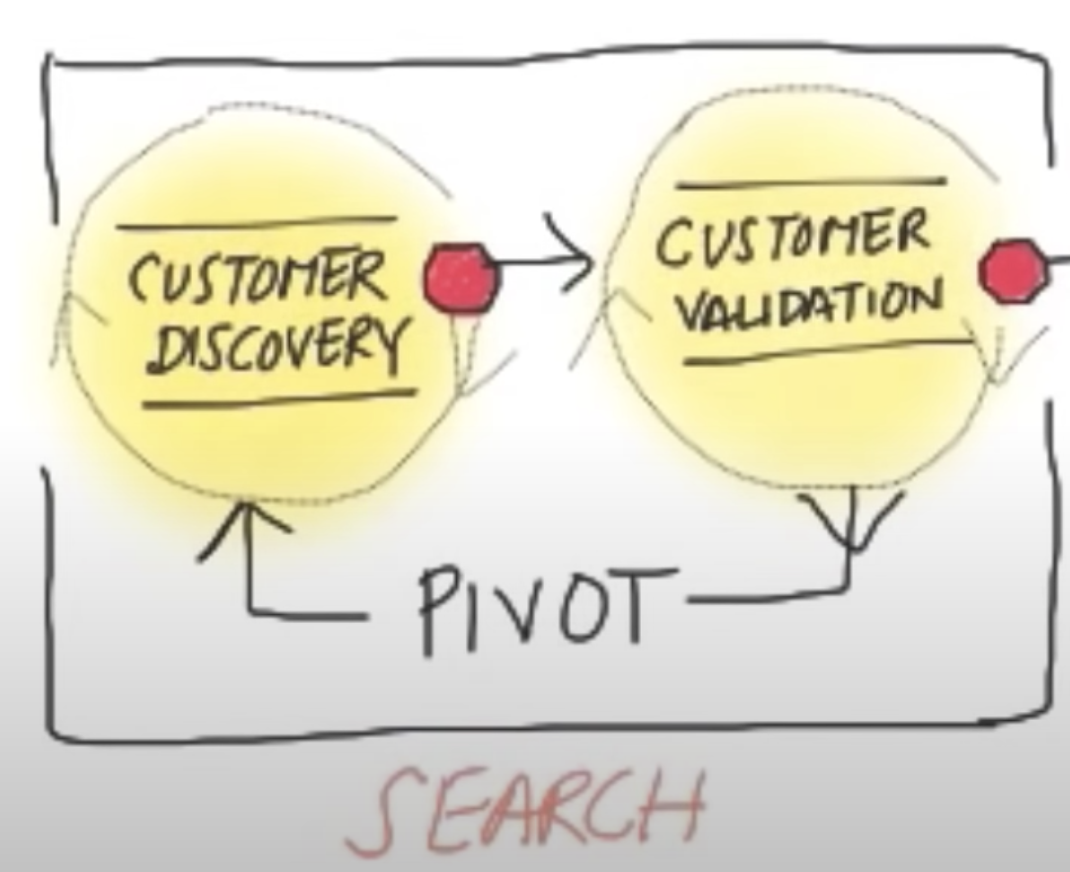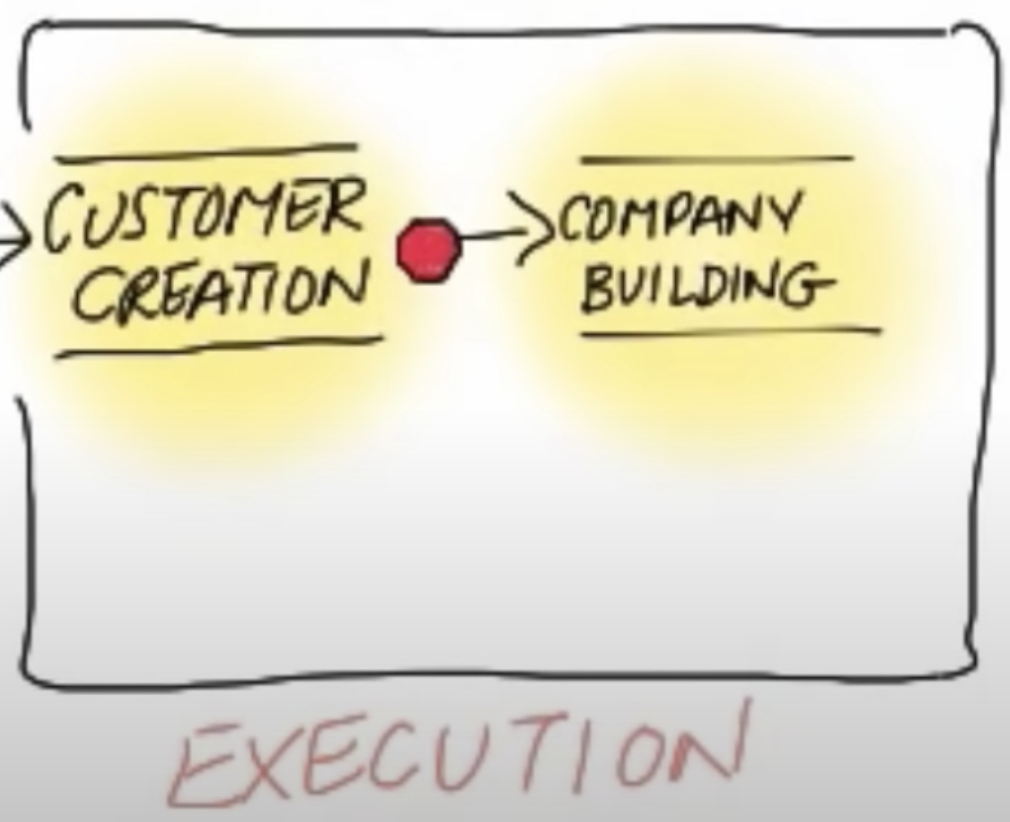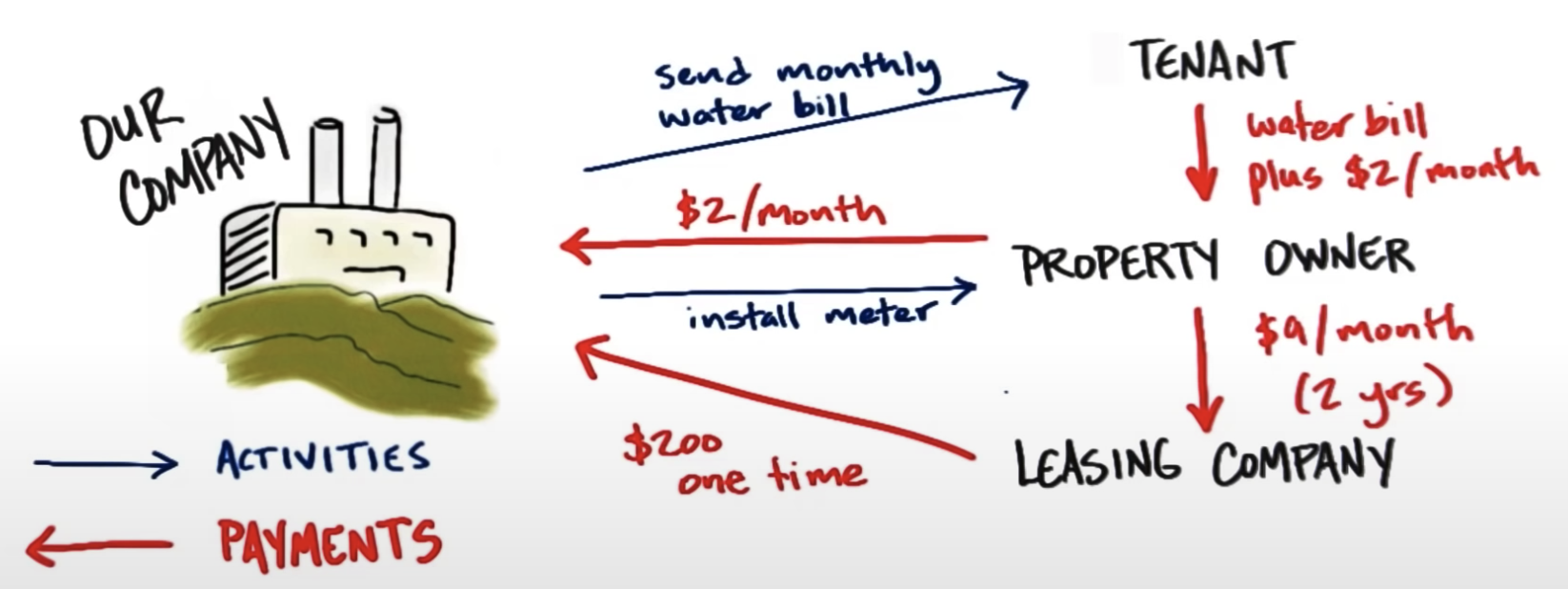How to Build a Startup

Table of Contents
- Overall Thoughts
- High-Level Summary
- Notes
- Lesson 1: Before You Get Started
- Lesson 2: What We Now Know
- Lesson 3: Business Models and Customer Development
- Lesson 4: Business Models and Customer Development
- Lesson 5: Value Proposition
- Lesson 6: Customer Segments
- Lesson 7: Channels
- Lesson 8: Customer Relationships
- Lesson 9: Revenue Models
- Lesson 10: Partners
- Lesson 11: Resources, Activities & Costs
- Sources
Overall Thoughts
This is a decent course. It will leave you with an understanding of the business model canvas, how you can create an initial business model canvas for your startup, and how your business model canvas can be iterated on as you gain insights from customer feedback to evolve your startup into a sizeable, cash flow positive corporation.
The course provides some useful and rigorous definitions and frameworks for ideas that are fundamental to entrepreneurship. To name a few:
- Defining startups and corporations, and comparing startups to large corporations
- Defining all types of markets, and exploring their properties
- Understanding your target market at the macroscopic and microscopic levels
- Different types of revenue models
I also enjoyed the inclusion of common pitfalls and real-world examples. It was fun to follow the story of JerseySquare.
I was disappointed by the general quality of the course materials. I felt that there were large amounts of vague or obvious information, and repetition — generally, a need for further refinement. The consistent stream of examples provided some necessary clarity at times.
Additionally, the quizzes were basically memory tests, and didn't really challenge or develop a deeper understanding of the material.
All in all, the course provided me with a good introduction to entrepreneurship.
High-Level Summary
Startups are searching for a profitable business model, and large corporations are executing their found profitable business model. Searching for a business model entails filling out the business model canvas, and iterating on it as you gain information through interactions with members of your target market.
Some components of the business model canvas relate to one another. Each component has their own common pitfalls. Pitfalls can be avoided by:
- Interacting with members of your target market
- Implementing established frameworks
- E.g. agile development
- Understanding the cash flows
- Market opportunity analysis
- Channel economics
- Customer acquisition cost and lifetime value
- The costs of your resources
Notes
Lesson 1: Before You Get Started
Lesson 2: What We Now Know
- Startups are not smaller versions of large corporations
- Startups:
- Spend their time searching for a business model

- Large corporations:
- Spend their time executing an operating plan

- No plan survives first contact with customers
- General planning comes before writing the business plan
- Waterfall development assumes:
- That you know your customer problem
- That you know your product features
- More startups fail from lack of customers than from failure of product development
- Have processes to manage the engineering process, to minimize engineering risk, but need processes to minimize customer risk
- Agile development
- Extreme programming: iteration and incremental delivery of the product, guided by customer feedback
- Contrasts the traditional approach of building all possible features from the get-go
- Startups founders must spend at least 20% of their time understanding their customers’ problems and needs
- The roles of the VP of sales in a large organization vary tremendously from those of the VP of sales in a startup
Lesson 3: Business Models and Customer Development
- Company: a business organization which sells a product or service in exchange for revenue and profit
- Note that this leaves out non-profits
- Note that this provides a measure of success
- Startup: a temporary organization designed to search for a repeatable and scalable business model
- Business model: how a company creates value for itself while delivering products or services for customers (represented nicely with the business model canvas)
- Value propositions
- Solving a problem or fulfilling a need
- Identifying who your customers are
- Customer segments
- Identifying who your customers are
- Geographically
- Socially
- Demographically
- Identifying why they would buy your good/service
- Channels
- How does the product get from our company to the customer
- Physical channels
- Virtual channels
- Customer relationships
- How to get, keep and grow customers
- The methods vary with respect to each channel
- Revenue streams
- How does the company make money from each customer segment
- What value is the customer paying for
- Key resources
- What are the most important assets to make the business model work
- Finance
- Physical (manufacturing, vehicles)
- Intellectual (patents)
- Human capital
- Key partners
- Who are the key partners and suppliers needed to make the business model work
- What key resources are we acquiring from them
- What key activities do they perform
- Key activities
- What are the most important things the company must do/become an expert at to make the business model work
- Production
- Problem solving
- Cost structure
- What are the costs to operate the business model
- Most important costs
- Most expensive resources
- Key activities that are the most expensive
- Fixed costs
- Variable costs
Lesson 4: Business Models and Customer Development
- Forming hypotheses about different features of the business model and testing them
- The customer development process:
- Search
- Customer discovery
- Test your assumption that other people have the same problem or need that you have
- Customer validation
- Does your proposed solution match what you thought the customer problem/need was
- Pivot
- Execute
- Customer creation
- End user demand and scale
- Company building
- Transitioning from customer development to a functional organization that can constantly execute
- The customer development process must be executed by the founder, because they have the power to change the product and make pivots after directly receiving customer feedback
- Hypothesis testing
- Search for insights, not just data
- Minimum viable product (MVP)
- Build the minimum features in order to get feedback
- Pivot
- When hypotheses do not match reality
- A substantive change is made to one or more business model components (unlike an iteration, which is a minor change)
- Customer discovery
- State your hypothesis
- Test the problem
- Test the solution
- Pivot or Proceed
- Customer validation
- Assume you have product-market fit
- Get ready to sell
- Acquire/activate customers
- Build high fidelity MVP
- Develop sales collateral (i.e. demos)
- Sales roadmap
- Get out of the building
- Test sell
- Develop positioning
- Summarize customer feedback
- Verify
- Are you ready to scale marketing and sales spending
- Are you sure you have a repeatable and scalable business model
- Market opportunity analysis
- Size of the market
- Research competitors
- Estimate growth rate and potential
- Total available market (TAM)
- How many people want/need the product
- How large is the market if they all bought
- Find it through industry analysts in your domain (i.e. Wall Street analysts)
- Served available market (SAM)
- The total available market that you can actually access (i.e. taking into account your sales channels, or taking into account the spending limitations of the people that want/need the product)
- Understand in both dollars and units of product
- Find it through talking to potential customers
- Target market (TM)
- The likely buyers of the served available market
- Validate with calculations (i.e. assuming X target market, year 1 should yield Y dollars)
- Question the validity of the assumptions in your calculations
- Find it through talking to potential customers, channel partners and competitors

Lesson 5: Value Proposition
- Value Proposition
- Solving a need or problem
- What are your gain creators? Benefits the customer:
- Expects
- Desires
- Is surprised by
- What are your pain killers? Reduce or eliminate:
- Time
- Costs
- Negative emotions
- Risk
- What functional/social/emotional jobs do you solve
- Your product
- Tangible (i.e. manufactured goods)
- Intangible (i.e. copyrights)
- Financial (i.e. insurance policies)
- Digital (i.e. e-books)
- Your service
- Core services (i.e. consulting)
- Pre-sales (i.e. help finding the right solution)
- After-sales (i.e. maintenance, disposal)
- Works hand in hand with customer segments. The relationship between value proposition and customer segments is called product-market fit
- Identifying key features of your product stems from identifying the effects of each feature. Then, use the key features to define your minimum viable product
- These key features also help to define detailed customer archetypes to bear in mind and target
- Needs tend to have significantly larger markets than problems
- Rank each pain and gain by intensity and frequency
- Minimum viable product creation
- Design to test your understanding of the problem and solution
- Physical
- Create something physical that users can see and touch
- Web/mobile
- Create a low-fidelity prototype
- Value proposition questions
- What do customers do today
- Why is the problem so hard to solve/not being solved already
- Technology insight
- Make something more efficient (in terms of speed, cost)
- Market insight
- Better distribution
- Better bundling
- Better branding
Lesson 6: Customer Segments
- Start with hypotheses about who your customers are, and test them
- Jobs to be done
- Functional
- Social
- Emotional
- Basic needs
- Five Fs
- Functional
- Financial
- Freedom
- Feeling
- Future
- Rank each job according to its significance to the customer (taking into account magnitude of utility and frequency)
- Day in the life
- Develop an understanding of a day in the life of your customer, and where your product fits in
- Customer gains
- Benefits the customer expects, desires, or is surprised by
- Customer pains
- Undesired costs, situations, risks, and negative emotions
- Customer persona/archetype
- Position/title in the workplace
- Age/sex
- Role (i.e. parent, child)
- Discretionary budget
- Motivations
- Role models
- Who is the customer in context
- User
- Influencer
- Recommender
- Decision maker
- Buyer
- Saboteur
- Customer testing considerations:
- How do you test interest
- Where do you test interest
- What kind of experiments can you run
- How many potential customers do you test
- Two-sided market
- Users and payers are disjoint
- Construct two business model canvases
- Can be generalized for n-sided markets
- Market Types
- Existing market
- Incumbents exist
- Customers want/need better performance
- Risks
- Incumbents defending their market share
- Network effect
- Continuing innovation
- If correct, linear revenue curve, as market share steadily increases
- Resegmented market
- What factors can be
- Eliminated that the industry has long competed on
- Reduced below/raised above the industry standard
- Created that the industry has never offered
- Risks
- Chasm (Moore) between early adopters and mainstream market yields the risk of a collapsing sales curve:
- Initial slope from early adopters confusing you as another competitor
- Stagnancy if/while resegmentation is ineffective
- Growth if resegmentation is effective
- New market
- Risks
- Even greater chasm between early adopters and mainstream market yields the risk of a flat sales curve:
- Initial slope from early adopters
- Drop of sales due to lack of adoption for an indefinite amount of time
- Rapid market adoption
- Clone market
- Adapting of a foreign business model to local conditions
- Local conditions
- Language
- Culture
- Import restrictions
- Local control/ownership
| Market Type | Customers | Customer Needs | Competitors | Risk | Examples | Time to Profitability |
| Existing market | Known | Performance | Many | Lack of branding, sales, and distribution | Google (search engine) | Shortest |
| Resegmented market | Possibly known | Better fit | Many if wrong about customers, few if right | Market and product re-definition | Southwest | Longer |
| New market | Unknown | Transformational improvement | None | Evangelism and education cycle | Groupon (daily deals market) | Longest |
| Clone market | Possibly known | Local version | None | Misjudging local needs | Baidu | Shorter |


Lesson 7: Channels
- How does the product get from the company to the customer
- Four combinations:
- Physical product, physical channel (physical stores with sales people)
- Digital product, physical channel
- Physical product, digital channel
- Digital product, digital channel
- Web distribution channels
- Dedicated e-commerce store
- App store
- Two-step distribution (i.e. sell through Amazon)
- Aggregator (i.e. Zappos, shoe and clothing retailer)
- Social commerce (i.e. Facebook Marketplace)
- Flash sales
- Physical distribution channels
- Original Equipment Manufacturer (OEM)
- System integrator
- Value added reseller
- Direct sales
- Web/online
- Distributors
- Dealers
- Retailers
- Channel economics
- Direct channel economics
- Profit \(=\) Price \(-\) Cost of Goods (COGS) \(-\) Cost of R&D \(-\) … \(-\) Selling costs
- Indirect (i.e. reseller) channel economics
- Profit \(=\) Price \(-\) COGS \(-\) Cost of R&D \(-\) … \(-\) Selling costs \(-\) Reseller costs
- Direct channels have a higher Selling cost, but have no Reseller costs
- OEM channel economics
- A good is incorporated into some other good, i.e. a graphics chip is integrated into a laptop
- The channel economics of the incorporated good contributes to the COGS of the other good that incorporates it
Lesson 8: Customer Relationships
- How to Get, Keep and Grow (GKG) your customer relationships
- Customer archetypes drive GKG
- Get
- Paid demand creation
- Public relations (managing and spreading information to the public)
- Advertising
- Webinars
- E-mail/mail
- Search Engine Marketing (SEM)
- Earned demand creation
- Publications in journals
- Conferences
- Blogs
- Social media
- Physical channel
- Get
- Awareness
- Interest
- Consideration
- Purchase
- Keep
- Loyalty programs
- Contests/events
- Product updates
- Customer satisfaction
- Grow
- Unbundling
- Upsell (good, better, best versions of a product)
- Cross-sell (marketing additional products to existing customers)
- Referrals (incentivise existing customers to bring on new customers)
- Virtual channel
- Get
- Acquire
- Activate (engage)
- Keep
- Loyalty programs
- Contests/events
- Blogs/RSS/email
- Social media
- Product updates
- Customer satisfaction
- Grow
- Unbundling
- Upsell (good, better, best versions of a product)
- Cross-sell (marketing additional products to existing customers)
- Referrals (incentivise existing customers to bring on new customers)
- Viral loop: someone who purchased the product sharing their positive experience with others who have not purchased the product
- Customer Acquisition Cost (CAC): estimated cost of getting one new customer, given the costs of paid and earned demand creation
- Churn: percentage of existing customers that stop using a product after some amount of time
- Lifetime Value (LTV): Amount that a customer spends throughout their relationship with a company
- LTV > CAC
Lesson 9: Revenue Models
- Revenue models is the strategy, pricing is the tactics
- Factors
- Customers and pay
- What value is the customer paying for
- Gains and alleviation of pains
- How do customers pay for products today
- How much do customers pay
- How much can customers afford to pay
- How will you package your product (i.e. decompose features into core and add-ons)
- Market size and estimate of market share
- How many goods/services can each channel sell/provide
- What is the cost of each channel
- What is the expected number of and cost of customer activations and customer acquiring
- Common mistakes
- A revenue stream is the price customers are charged
- Setting the price according to the cost of manufacturing
- A good starting point, but often can be refined
- The price must be set lower than those of competitors
- Revenue stream: the strategy the company uses to generate cash from each customer segment
- Asset sale
- Sale of ownership right to a physical product
- Usage fee
- Fee proportional to the usage of a service (i.e. FedEx)
- Subscription fee
- Fee for continuous access to a service
- Renting fee
- Fee for temporary access to a good or service
- Licensing fee
- Fee for use of some IP
- Intermediation fee
- Fee for bringing together two or more parties involved in a transaction (i.e. Airbnb)
- Advertising fee
- Paid by brands/companies to get in front of potential customers
- Pricing model: the tactics used to set the price in each revenue stream/customer segment
- Fixed pricing
- Cost to build product + mark-up
- Value priced (based on customer segment research)
- Volume priced / stepped pricing (A units for $B, 2A units for $2B-1, …)
- Dynamic pricing
- Negotiation
- Yield management (fixed, time-limited resource i.e. Airline seats)
- Real-time markets
- Auctions
- Market type affects pricing
- Nature of existing markets (i.e. perfect competition, monopoly)
- How will the competitors react
- Determine by investigating their product, costs and prices
- Single-sided markets / “revenue first” companies: care about revenues
- Expected rates of revenue growth and changes in revenue amounts over time
- Assumptions about the business when revenue milestones are reached (i.e. increase in sales requires expansion of production)
- Multi-sided markets / “users first” companies: prioritize users over revenue
- Important to also establish how much people are willing to pay to gain access to N users
- Market types and revenue forecast
- Relates back to diagrams in customer segment lesson
- New market:
- Hockey stick
- Existing market:
- Linear
- Resegmented market:
- Linear, flat, linear
- Draw the diagram — putting it all together
- Graphically represent customer segments, revenue models, and pricing models

Lesson 10: Partners
- Other companies that provide you with resources, and perform key activities
- What defines a partner
- Shared economics
- Mutual success/failure
- Co-development/invention
- Why have partners
- Faster time to market
- Broader product offering
- More efficient use of capital
- Unique customer knowledge or expertise
- Access to new markets
- Types of partners
- Strategic alliances
- Use partners to build the “whole product”
- Complement your core product with other products or services
- Joint business development
- Joint promotion of complementary products
- Intel inside example
- Cooperation
- Competitors join together to grow awareness of their industry
- Key suppliers
- Outsource suppliers
- Outsource part of your company to a third party
- Example of trained doctors in India analyzing X-rays
- Direct suppliers
- Components
- Raw materials
- Not just a cost of goods — beneficial to view as a partnership
- Traffic partners
- Long-term agreements with other companies to deliver long-term predictable levels of customers
- Referrals and sponsorships
- Partnership risk
- Technical incompatibility
- Delays
- Your delay = max(delay across all partners)
- No clear ownership of customer
- Products lack vision, shared product design
- Different underlying objectives in the relationship
- Churn in partners strategy or personnel
- Disruption in person-to-person relationships between companies can harm the partnership
- Intellectual property issues
- Difficult to unwind or end partnerships
- Investment
- Easy to get over-excited and make a mistake
- Think about their incentives
- Common deal constraints and rebuttals
- Constraints: most favoured nations clause, one-year exclusivity
- Rebuttal: is essentially equivalent to being bought without them spending the money on you. These constraints restrict your growth. Selling to their competitors will increase your size, which is in the interest of everyone.
- Try to get sales deals rather than investment deals
- $X order is better than relinquishing $X ownership
- Importance of relative size of partner to you
- Startup mistakes
- Thinking that you are a peer to a large partner
- Thinking that you need strategic alliances and joint partnerships on day 1 in resegmented and new markets
- Let the passionate early adopters help you figure out what the mainstream will need in the future through customer feedback, rather than trying to preemptively address this
- Not appreciating that partners can be a potential acquirer, which is something you might want in the future
Lesson 11: Resources, Activities & Costs
- Resources: most important assets to make your business model work
- Physical
- Company facilities
- Office space
- Company location
- Products/services
- Supply of raw materials
- Warehouse space
- Many physical goods are capital intensive
- Financial
- Initial raising of money (financing capital)
- Friends
- Family
- Crowdfunding
- I.e. Kickstarter
- Angels
- Funding for demand creation, customer relationships, and cost of your channel (also financing capital)
- If your company demands a physical channel or millions of dollars
- Venture capital
- Corporate partners
- US government financing
- To supplement generated revenue (operating capital)
- Lease-lines: a line of credit for a limited period of time (i.e. 1 year), supplied by a bank
- Factoring: in the case of having confirmed purchase orders that do not pay for an extended period of time (i.e. 90 days), borrow money against the confirmed purchase orders at a discount
- Vendor-financing: when a company lends money to be used by the borrower to buy the vendor's products or property. For example, want to buy expensive hardware that will enable you to sell products, but do not have the funding now, but you borrow this money directly from the vendor
- Human
- Personal success
- Teacher: teach a specific subject
- Coach: teach a specific skill
- Mentor: general improvement over the course of your career
- Company success
- Advisory board: general strategic advice
- Typically rewarded with a small stake in the company
- Qualified employees
- Ideally have more skill and vision than you in their respective domain
- Intellectual Property
- Trademark
- Protects branding
- I.e. logos, slogans
- Prevents others from using “confusingly similar” logos
- Registration is optional but advantageous if approved
- Specifics vary from country to country
- Copyright
- Protects creative work
- I.e. software, music
- Prevents others from copying, distributing, or making derivatives of your work
- Registration is optional
- Suing is required to reap the rewards of infringement
- Trade secrets
- Protects secrets of value
- I.e. private technology, formulae
- Registration is optional
- Protection and enforcement is up to you
- Contract
- Protects things defined in the contract
- I.e. technology, list of clients
- I.e. NDA
- Note: common mistake for founders to think that they can protect their technology from investors with an NDA alone. Source code should be hidden until investment is made and an NDA is signed
- Protection and enforcement is defined in the contract
- Patent
- Protects inventions
- I.e. new technology
- Government granted monopoly
- Application and examination is required
- Utility varies across industries and markets
- Costs
- Must be less than revenue stream at some point in time
- Types of cost
- Fixed
- Variable
- Search vs execution metrics
- Income statement, balance sheet, etc. are execution metrics
- For a search company (startup), metrics can be derived from attributes of the business model canvas:
- Value proposition
- Product cost
- Customer relationships
- Customer acquisition and retention costs
- Market type
- Dictates shape of revenue curve
- Operating costs
- Fixed and variable
- Channel
- Cost of channel, channel promotion, storage
- Burn rate
- Money spent per month
- On the rate things are going, when will you run out of money
- Unit economics
- All expected cash flows for one customer over time
Sources
Main image: By Barn Images, hosted by Unsplash, license
Course: How to Build a Startup with Steve Blank
Overall ThoughtsLesson 3: Business Models and Customer Development
Lesson 6: Customer Segments
Lesson 7: Channels
Lesson 9: Revenue Models
Lesson 10: Partners
Lesson 11: Resources, Activities & Costs